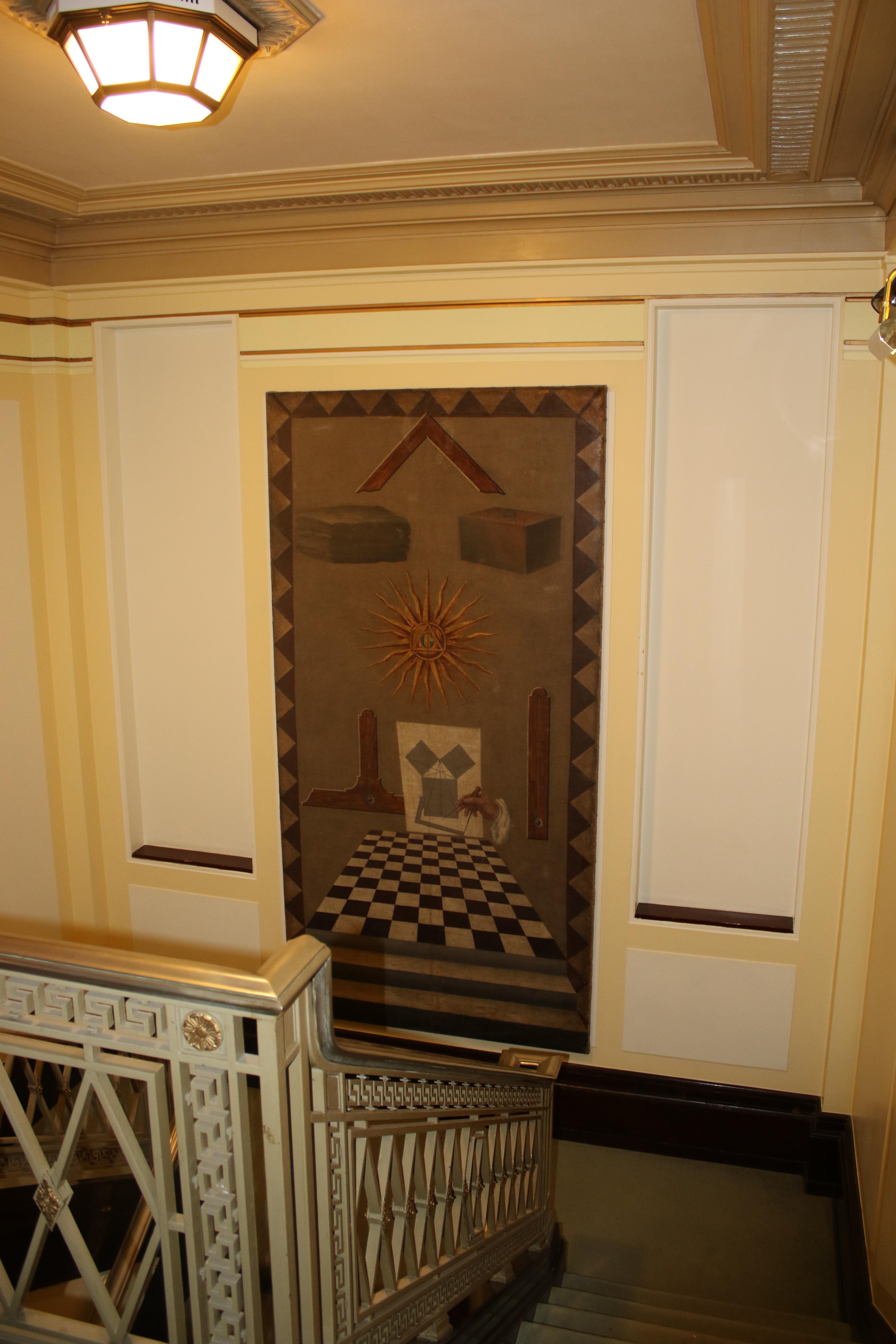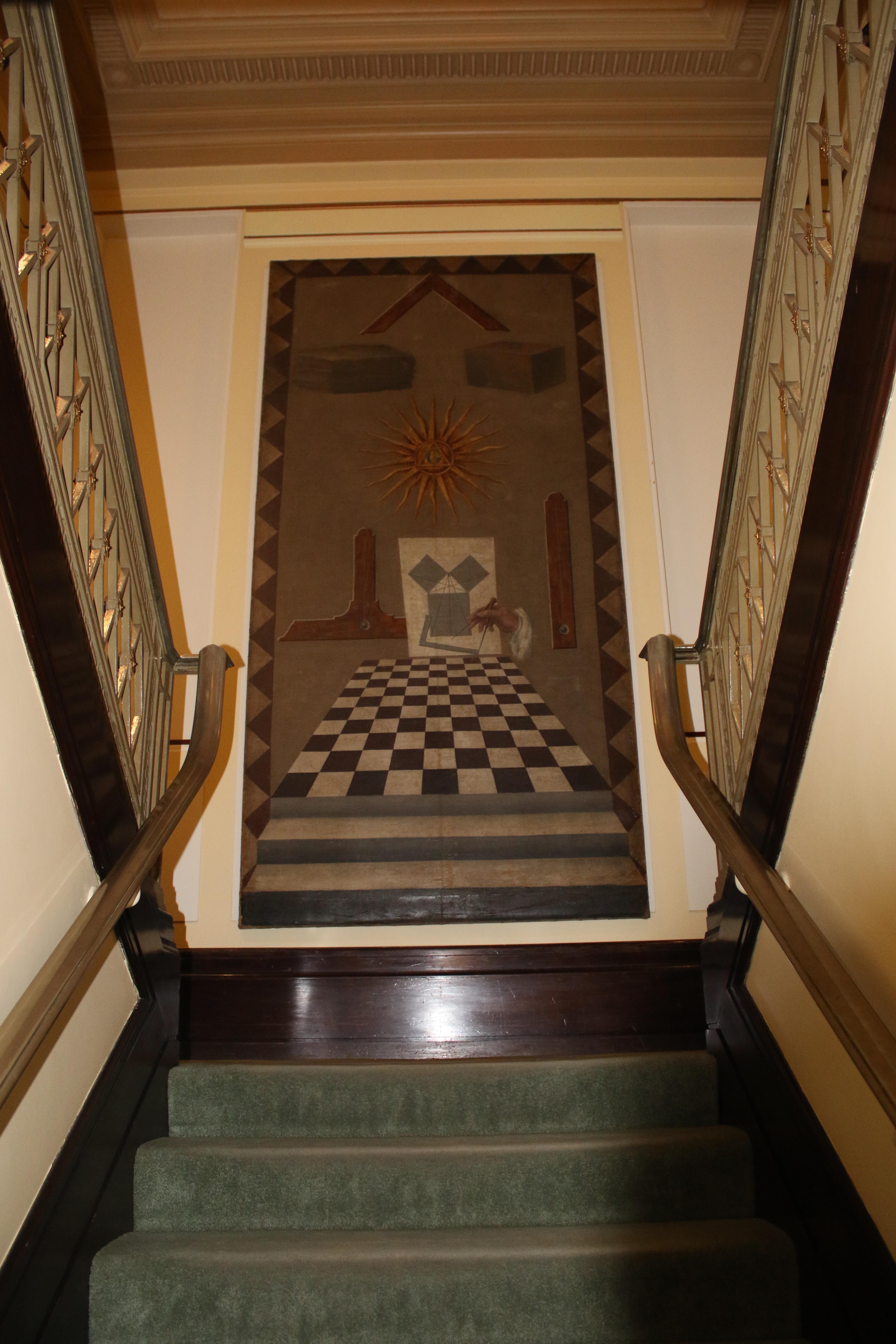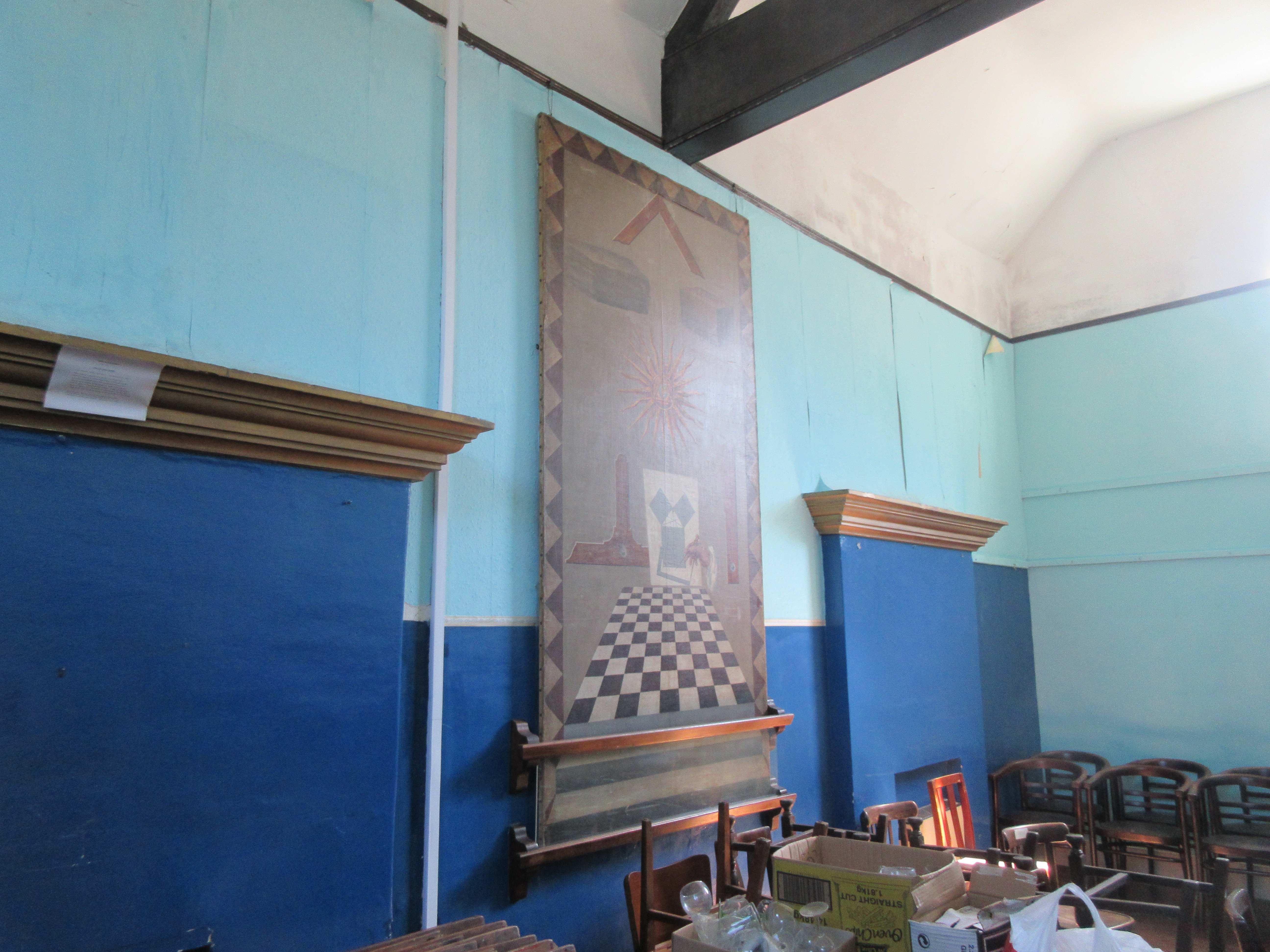By Mark Dennis, Curator at the Museum of Freemasonry
THANKS TO LONDON FREEMASONS, A TRACING BOARD MOVES TOWN FOR THE FIRST TIME IN TWO HUNDRED AND FORTY YEARS.
Sometimes the generosity of London freemasons can help to save something of national importance to Freemasonry. That happened recently when the Museum of Freemasonry was contacted by the Lodge of the Marches in Ludlow. They were about to leave the masonic hall that they had built for themselves in 1904 and in it was a tracing board that they wanted to sell. This was painted for the Silurian Lodge No 576 in the 1790s and had hung for over a hundred years in an upstairs room of the hall. Our Curator and Librarian immediately jumped on a train to Ludlow to assess the hall and any items of historical interest. They were not disappointed as what they found was a unique board hanging high on the wall and clearly of abnormally large size, twelve feet by six.

The first Lodge in Ludlow was Mercian Lodge No 485, consecrated in 1805. The Lodge had inherited most of its furniture from the Silurian Lodge, which had worked in Kington, Herefordshire from 1791 and throughout the late 1790s. The Mercian Lodge was short-lived, working for about twenty years before being dissolved in 1828. After an interval of 25 years without Freemasonry in the town, the Lodge of the Marches No 887 was consecrated. Fortunately, among the seven founder members, at least one had been an officer in the Mercian Lodge, and so the furniture and jewels of both the Silurian and Mercian Lodges came into the possession of the new Lodge, including the tracing board.

The board is remarkable as it shows a hand with the lacy cuff of the 1700s, drawing the 47th proposition of Euclid. The rest of the symbolism is very simple, with the ashlars, master and wardens’ tools and G in a golden sunburst. It features the steps going from the chequered carpet to the bottom of the board rather than sitting inside the border. One of the previous Librarians at Grand Lodge, Terry Haunch, had seen the board when he retired to the Ludlow area in the 1980s and, at his suggestion, it had been properly conserved, so it was in good condition. The building had already been sold, and the clock was ticking as the new owner wanted to take possession in just a few weeks. Time was of the essence to raise the money and rescue the board.
This was where Grand Master’s Lodge, Prince of Wales’ Chapter and Lodge of Fortitude and Old Cumberland stepped into the breach. Their support allowed the board to be saved and brought to London. There was just one small problem to resolve… it was too big to go down the winding stairs of the hall!
After several slightly alarming suggestions (including removing a second-floor window and ‘posting’ it out into the street), the board was eventually removed from its supporting frame and carefully snaked down the stairs and then remounted before transport. This sort of relocation must be undertaken by specialists, and so in addition to the cost of the board, the Museum had to pay for Artmove (a well-respected shipper of exhibits across the world) to complete the move and the re-hanging of the board in the Museum.
The board is now on the top of the stairs in the South Gallery of the Museum. It fits as though it was always meant to be there and has already attracted a lot of interest. It will now have a second life as a way of explaining to visitors the importance of symbolism in the 18th century.


This article is part of the Arena Magazine, Issue 47 January 2022 edition.
Arena Magazine is the official magazine of the London Freemasons - Metropolitan Grand Lodge and Metropolitan Grand Chapter of London.
Read more articles in the Arena Issue 47 here.